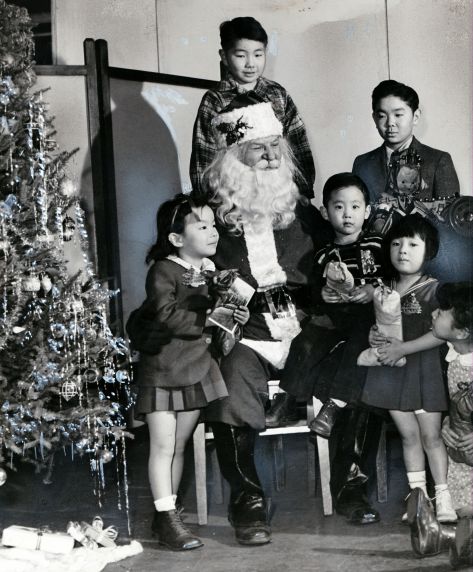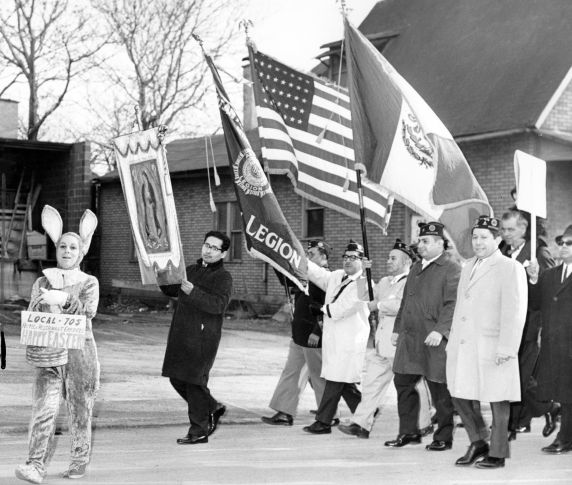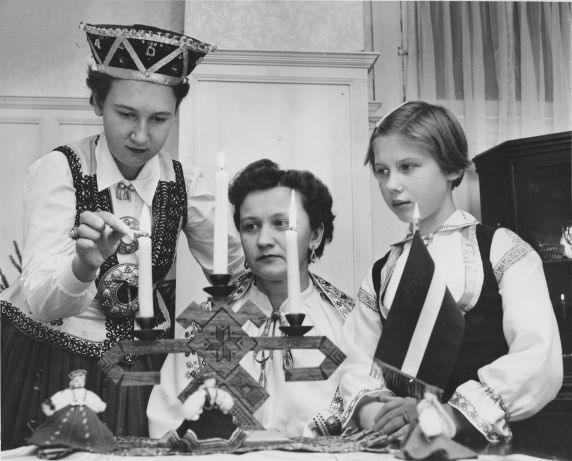Hidden Gems: Holidays in the Folklore Archive
 Winter is the time for the celebration of holidays and festivals in many ethnic and religious groups around the world, from the Winter Solstice to Kwanzaa. Though the Reuther Library lacks any Druid collections that shed light on prehistoric winter rites, it is the home of a relevant “hidden gem” collection: the Folklore Archive. The holiday information in this collection is wide-ranging, enlightening and sometimes amusing.
Winter is the time for the celebration of holidays and festivals in many ethnic and religious groups around the world, from the Winter Solstice to Kwanzaa. Though the Reuther Library lacks any Druid collections that shed light on prehistoric winter rites, it is the home of a relevant “hidden gem” collection: the Folklore Archive. The holiday information in this collection is wide-ranging, enlightening and sometimes amusing.
The Folklore Archive, established in 1939, contains the oldest and largest record of urban folk traditions in the United States. At its core are thousands of student field research projects from Wayne University (later Wayne State) classes. These cover a broad range of topics, typically consisting of transcripts of oral interviews conducted by the students as part of their research and also research papers from various courses. The collection is strong in modern industrial and occupational folklore, reflecting the rich ethnic diversity and work-oriented heritage of Detroit and southeastern Michigan. The archives’ subject index is a 9-drawer card catalog divided by subjects, religions, ethnicities and nationalities.
Searching for holiday themes, one can find the common December holidays of Christmas and Hanukah, as well as holidays around the calendar—New Year’s, Easter, Passover, many saints’ days, Yom Kippur, Ramadan and others less well known. The catalog lists over 250 papers and interviews that deal with holidays and festivals of many ethnicities and nationalities--from Albanian and African-American to Macedonian, Polish and Ukrainian. Examples from the collection prove varied and fascinating.

For instance, “Santa Claus in Advertising—A Use of Folk Materials,” is a 1953 paper penned by Clarence E. Passeno. The author analyzes the use of Santa in the ads of 67 different manufacturers, including cigarettes and chewing tobacco, radios and TVs, clothing, tools and car accessories. In 1966, Carol Zawisa wrote on the origins and evolution of Christmas carols. Judith Sabo collected Halloween and Christmas lore from students at Ford Junior High School in 1963. The students were primarily of European and Mexican origin, and they discussed familiar customs, recipes, games, stories and songs. “Christmas Folk Carols of the American Negro” is a 1966 study by Carolyn Szabo, and it includes the music scores for about two-dozen carols. Many other writings about the African-American community are included in the collection.
“The Ethnic Festival of Chanukah,” by Irving Feldman (1964) delineates many customs for the Jewish Festival of Lights. “Folklore and Jewish Holidays and Customs,” was written by Mary Kinitzer and dates “prior to 1942.” Her paper and several others discuss various Jewish holidays and festivals including Purim, Sukkot and Passover. A series of short essays by Sumant C. Mehta (1953) tells about the Indian festivals of Holi and Diwali. In 1958, Ted Bear wrote about Ramadan in Morocco.  Transcripts of interviews with members of the Macedonian community in Detroit by Faye-Ann Schott, conducted in 1976, reveal details about the holidays Vodici, Kostanden and the March celebration of spring. There are essays on the customs, lore and music of Native American tribes and on the festivals and holiday customs in Asian communities.
Transcripts of interviews with members of the Macedonian community in Detroit by Faye-Ann Schott, conducted in 1976, reveal details about the holidays Vodici, Kostanden and the March celebration of spring. There are essays on the customs, lore and music of Native American tribes and on the festivals and holiday customs in Asian communities.
The Folklore Archives holds a wealth of historic views of holidays and festivals from around the world as celebrated by individuals and families in the Detroit area.
The Reuther Library wishes everyone festive times whenever and wherever you celebrate.

 Reddit
Reddit Facebook
Facebook LinkedIn
LinkedIn